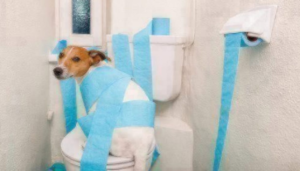Potty training a puppy in an apartment can be a challenging yet rewarding process. Unlike houses with immediate access to a backyard, apartments require more structured approaches to ensure your puppy learns where and when it is appropriate to relieve themselves. With patience, consistency, and the right techniques, you can successfully potty train your puppy even in a confined living space.
The first step in potty training a puppy in an apartment is to establish a consistent routine. Puppies thrive on predictability, and having a regular schedule for meals, playtime, and bathroom breaks helps them understand what is expected of them. Begin by feeding your puppy at the same times each day, as this helps regulate their digestive system and makes it easier to predict when they will need to go outside. After each meal, take your puppy to the designated potty area to encourage them to relieve themselves.

Creating a designated potty area is crucial in an apartment setting. Whether you choose to use puppy pads, a balcony potty system, or take your puppy outside, consistency is key. If you opt for indoor potty pads, place them in a location that is easily accessible yet away from the puppy’s sleeping and eating areas. Encourage your puppy to use the pads by taking them there frequently, especially after meals, naps, and play sessions. Praise and reward your puppy with treats and positive reinforcement when they successfully use the designated area.
If you prefer to take your puppy outside, establish a routine that includes regular trips to a nearby designated potty spot. Puppies have small bladders and may need to go outside as often as every two hours. Be prepared to take your puppy out first thing in the morning, after meals, after naps, and before bedtime. Use a specific word or phrase, such as “go potty,” each time you take your puppy to the designated spot. This helps them associate the command with the action over time.
Crate training can be an invaluable tool in the potty training process, especially in an apartment. A properly sized crate provides a safe and comfortable space for your puppy and helps prevent accidents when you are unable to supervise them. Dogs naturally avoid soiling their sleeping area, so using a crate can encourage your puppy to hold their bladder until they are taken outside. Ensure the crate is just large enough for your puppy to stand up, turn around, and lie down comfortably. Gradually increase the time your puppy spends in the crate, starting with short intervals and extending them as they become more accustomed to it.
Accidents are inevitable during the potty training process, so it is important to remain patient and avoid punishment. If your puppy has an accident, clean it up thoroughly using an enzymatic cleaner to remove any lingering odors that might attract them back to the same spot. Avoid scolding your puppy, as this can create fear and anxiety, hindering the training process. Instead, focus on reinforcing positive behavior by praising and rewarding your puppy when they use the designated potty area.
Observation and supervision play a crucial role in potty training. Keep a close eye on your puppy, especially during the initial stages of training, to recognize signs that they need to go outside. Common signals include sniffing the ground, circling, or whining. When you notice these signs, immediately take your puppy to the designated potty area to prevent accidents. Over time, you will become more attuned to your puppy’s cues, making it easier to anticipate their needs.
Consistency extends beyond routine and observation to the entire household. Ensure that all family members are on the same page regarding potty training techniques and commands. Consistent use of the same words and actions helps reinforce the desired behavior and prevents confusion for the puppy.
In addition to routine and consistency, providing plenty of opportunities for physical exercise and mental stimulation is essential. A well-exercised puppy is more likely to rest and less likely to have accidents due to pent-up energy. Regular playtime, walks, and interactive toys can help keep your puppy engaged and reduce the likelihood of inappropriate potty behavior.
In summary, potty training a puppy in an apartment requires a combination of consistent routine, designated potty areas, crate training, observation, and positive reinforcement. By establishing a predictable schedule, creating clear potty spots, using a crate effectively, and remaining patient and observant, you can successfully teach your puppy to relieve themselves appropriately even in a limited living space. With time and effort, your puppy will learn the habits necessary for a well-adjusted and house-trained companion, making apartment living enjoyable for both of you.
